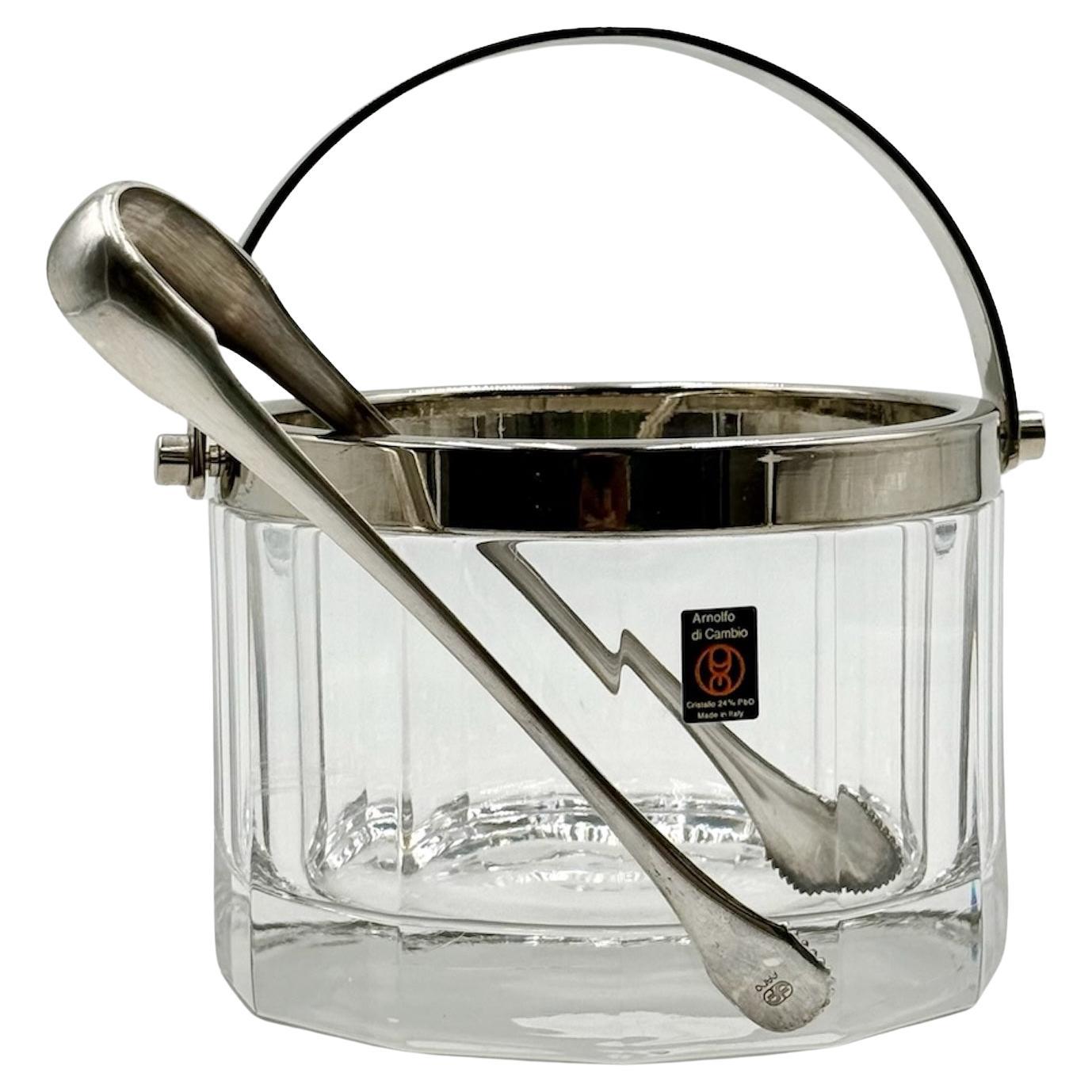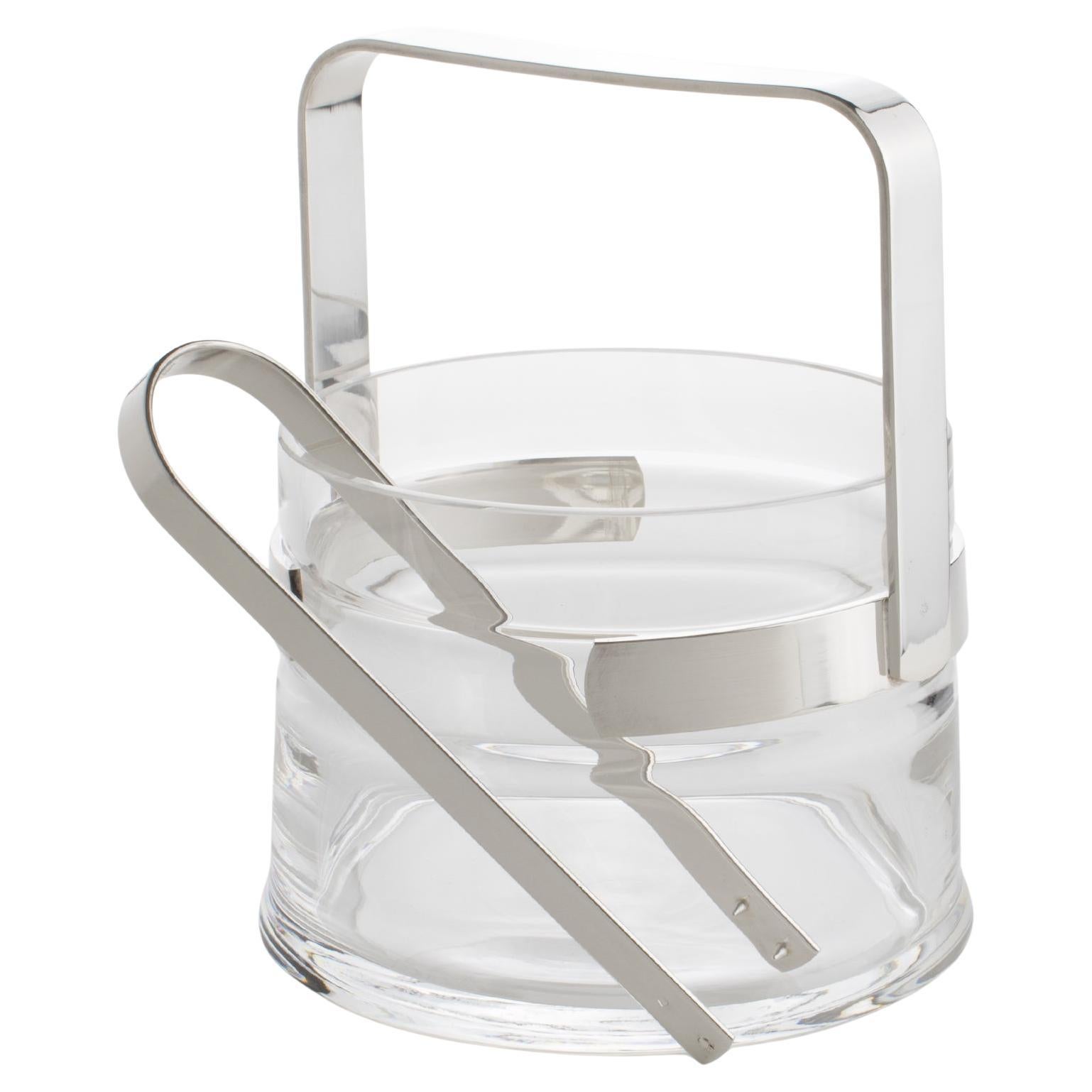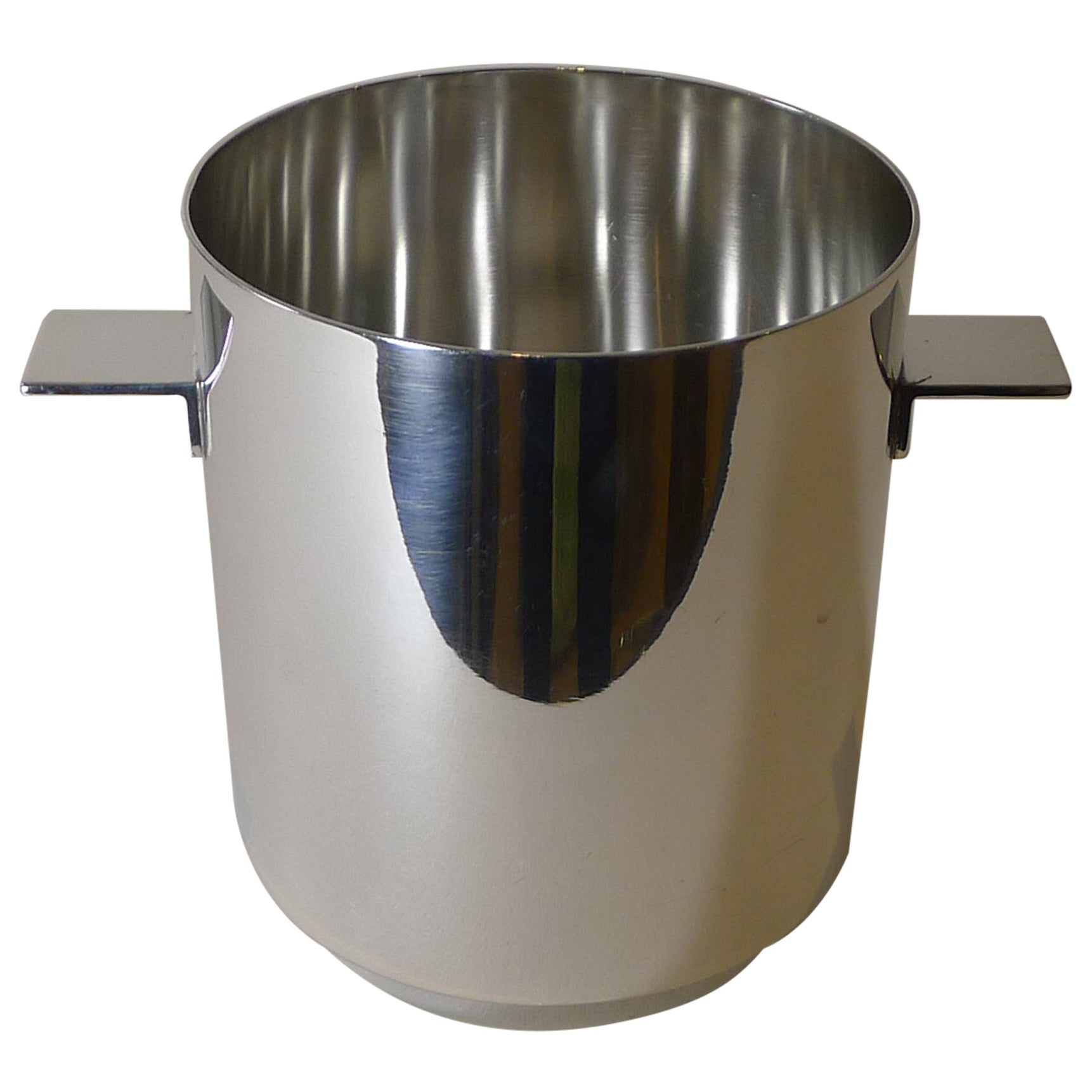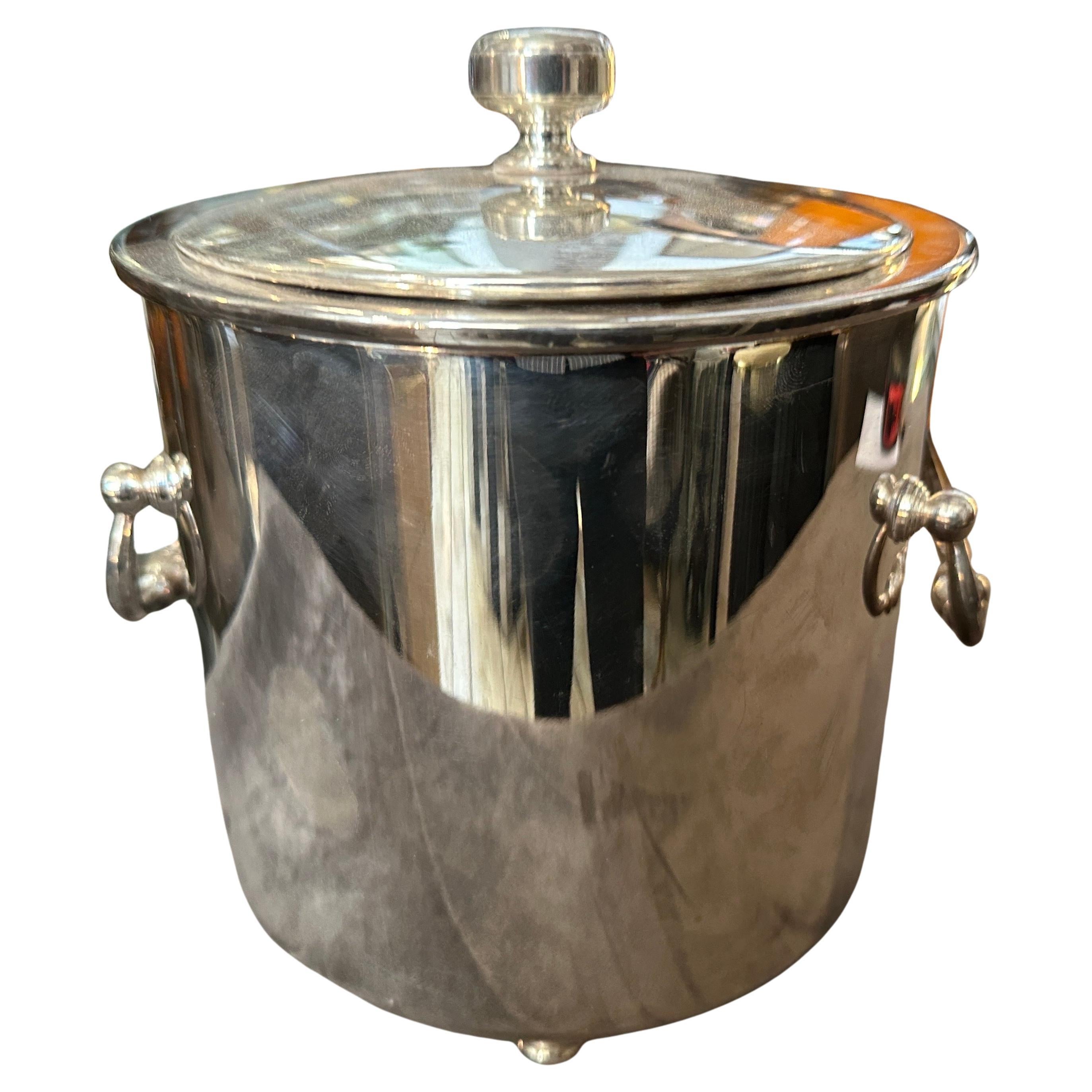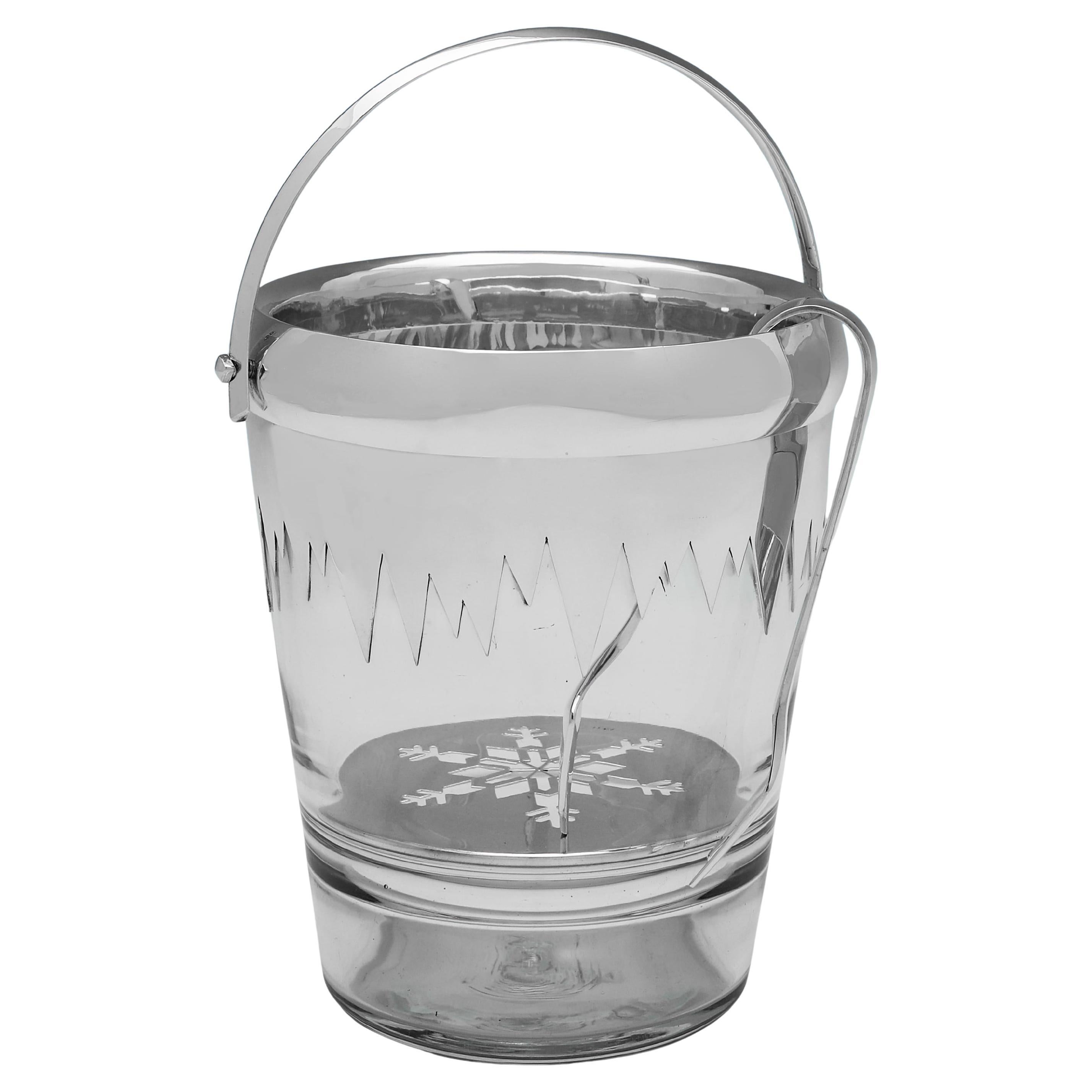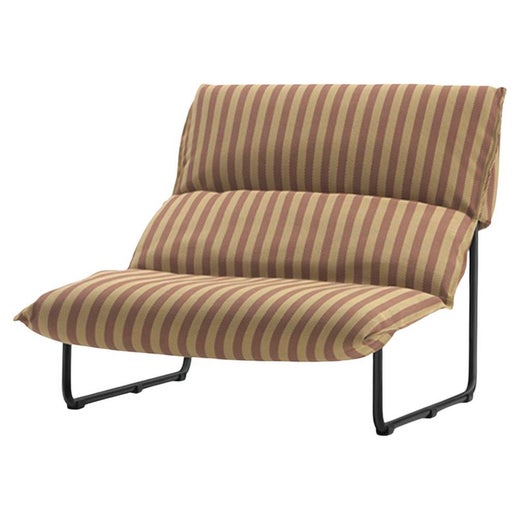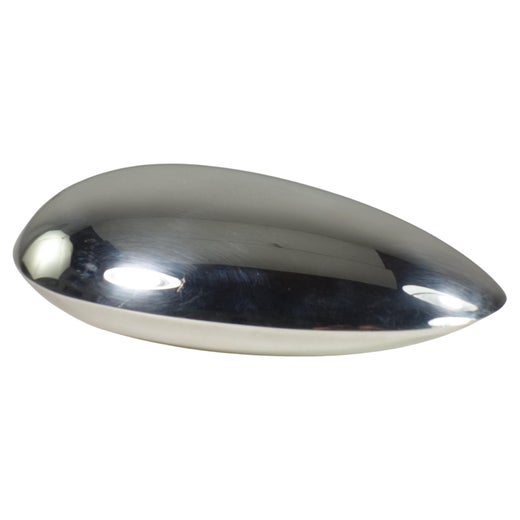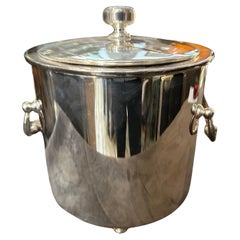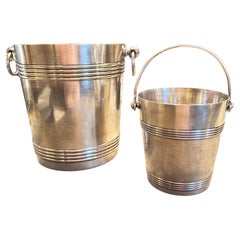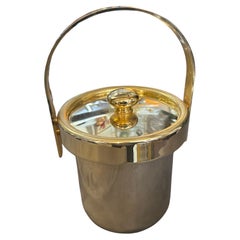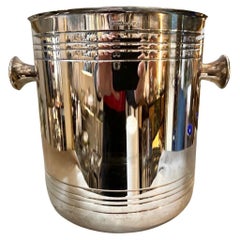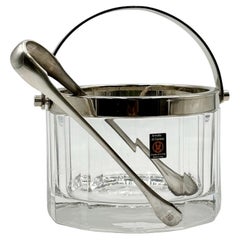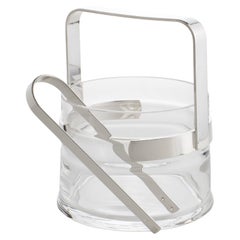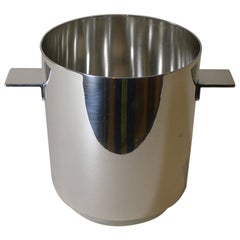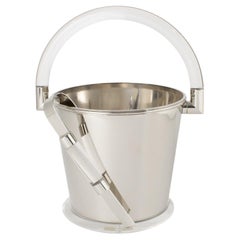A 1970s Modern Arnolfo Di Cambio Ice Bucket with a Lino Sabattini Ice Tongs
About the Item
- Creator:Cini Boeri (Designer),Lino Sabattini (Designer),Arnolfo di Cambio (Manufacturer),Christofle (Manufacturer)
- Dimensions:Height: 8.27 in (21 cm)Width: 6.3 in (16 cm)Depth: 5.91 in (15 cm)
- Sold As:Set of 2
- Style:Modern (Of the Period)
- Materials and Techniques:
- Place of Origin:
- Period:
- Date of Manufacture:c. 1970
- Condition:
- Seller Location:Aci Castello, IT
- Reference Number:1stDibs: LU2394343434772
Cini Boeri
Had Cini Boeri been a man, the Milanese architect and furniture designer, who died in 2020 at age 96, might be regarded today on par with such visionaries of the mid-20th century as Gio Ponti or Marco Zanuso. She worked with both. Although she’s well known and deeply respected in Italy, her renown elsewhere has been more akin to a cult following.
“I admire the work she did across architecture, interiors and furniture,” designer Faye Toogood says of Boeri’s impact. “She practiced architecture during a time when it was considered that women were too fragile to work outside.”
Boeri was one of very few women of her era to graduate from Milan Polytechnic with an architecture degree, which she did in 1951. Her illustrious career hinged on the strict economy of her designs and limited palette of materials. For example, her innovative 1971 Serpentone sofa for Arflex was crafted from just one material, polyurethane foam, and sold by the meter. Her ingenious 1987 Ghost chair for Fiam was cut from a single sheet of thick glass.
But in Boeri’s earlier days, her pieces displayed a more youthful exuberance. The circa 1968 Cubotto cabinet, produced in small numbers by Arflex, is an elegantly irregular arrangement of eight drawers of varying dimensions. The wooden cube, two feet square, was finished in laminate — in vivid orange, blue, sand or white — with color-coordinated casters and handles of black-enameled brass. Its design reflects a Space Age interest in flexible, space-saving, multiuse furnishings.
“It’s a very clean piece of design,” says Kaisha Davierwalla, owner and founder of Vaspaar Italy. “Even with its strong, square lines, somehow the vibrant colors and asymmetry have the feel of a feminine touch.”
Find vintage Cini Boeri seating, lighting and tables on 1stDibs.
Lino Sabattini
Lino Sabattini was the preeminent figure in modern Italian silver and metalware design. His expansive and diverse body of work is marked by its strength and boldness, whether in dynamic forms that suggest the thrust and power of Italian Futurist art and design or light and curvaceous biomorphic serveware and decorative objects.
Sabattini was largely self-taught as a designer. Born in the northern Italian town of Correggio, he learned metalsmithing techniques while working in the studio of a maker of brass tableware. He also served as an apprentice of sorts to the expatriate German ceramist Roland Hettner, who taught Sabattini about fluidity of form and showed him how shapes derive from the behavior of materials.
At age 30, Sabattini opened a studio in Milan, and his work quickly came to the attention of Gio Ponti, who decided to publish it in Domus, the Italian design legend's influential design and architecture magazine. Ponti also arranged for Sabattini’s creations to be included in a 1956 exhibition of contemporary Italian design in Paris. The principals of Christofle, the revered French silverware maker, were so impressed that they hired the young designer as the firm’s artistic director, a post he held until 1963. Sabattini, who would also go on to design ceramic wares for Rosenthal, returned home to open Argenteria Sabattini in Bregnano, a company still in business today.
A designer with a questing curiosity and ever-evolving aesthetic sensibility, Sabattini couldn’t be pinned down to one particular style. His best-known work, the Como coffee and tea service of 1956, has an elegant, attenuated and energetic form; his Stairs coffee and tea service (1971), meanwhile, is a clever group of simple columnar shapes in stepped heights, which nest together in a compact arrangement. Other Sabattini pieces have dramatic angles, or sweeping, wing-like flourishes, or consist of perforated ovoids somehow reminiscent of sculptures by Brancusi. In any style, Sabattini produced objects of singular fascination.
Find a range of vintage Lino Sabattini vases and other decorative objects on 1stDibs.
- ShippingRetrieving quote...Shipping from: Catania, Italy
- Return Policy
More From This Seller
View AllLate 20th Century French Modern Barware
Silver Plate
Mid-20th Century French Mid-Century Modern Barware
Silver Plate
Mid-20th Century Italian Mid-Century Modern Barware
Metal
Late 20th Century French Modern Wine Coolers
Silver Plate
Mid-20th Century Italian Mid-Century Modern Wine Coolers
Silver Plate
Late 20th Century French Modern Wine Coolers
Crystal, Silver Plate
You May Also Like
Vintage 1980s Italian Mid-Century Modern Tableware
Crystal, Metal
Vintage 1980s Italian Modern Barware
Crystal, Metal, Silver Plate
Mid-20th Century French Mid-Century Modern Barware
Silver Plate
Vintage 1980s Italian Mid-Century Modern Barware
Chrome
Vintage 1980s English Modern Barware
Sterling Silver
Vintage 1970s Italian Post-Modern Decorative Bowls
Silver Plate
Read More
With Cini Boeri’s Clever 1960s Corner Cabinet, There’s No Need to Choose Sides
The Italian designer’s playful piece offers an elegant storage solution.
John Pawson’s New Jaffa Hotel Brings Contemporary Design to an Ancient Israeli Neighborhood
The architect has imbued the minimalist-chic Tel Aviv stay with his signature style, while at the same time honoring the site's long history.
